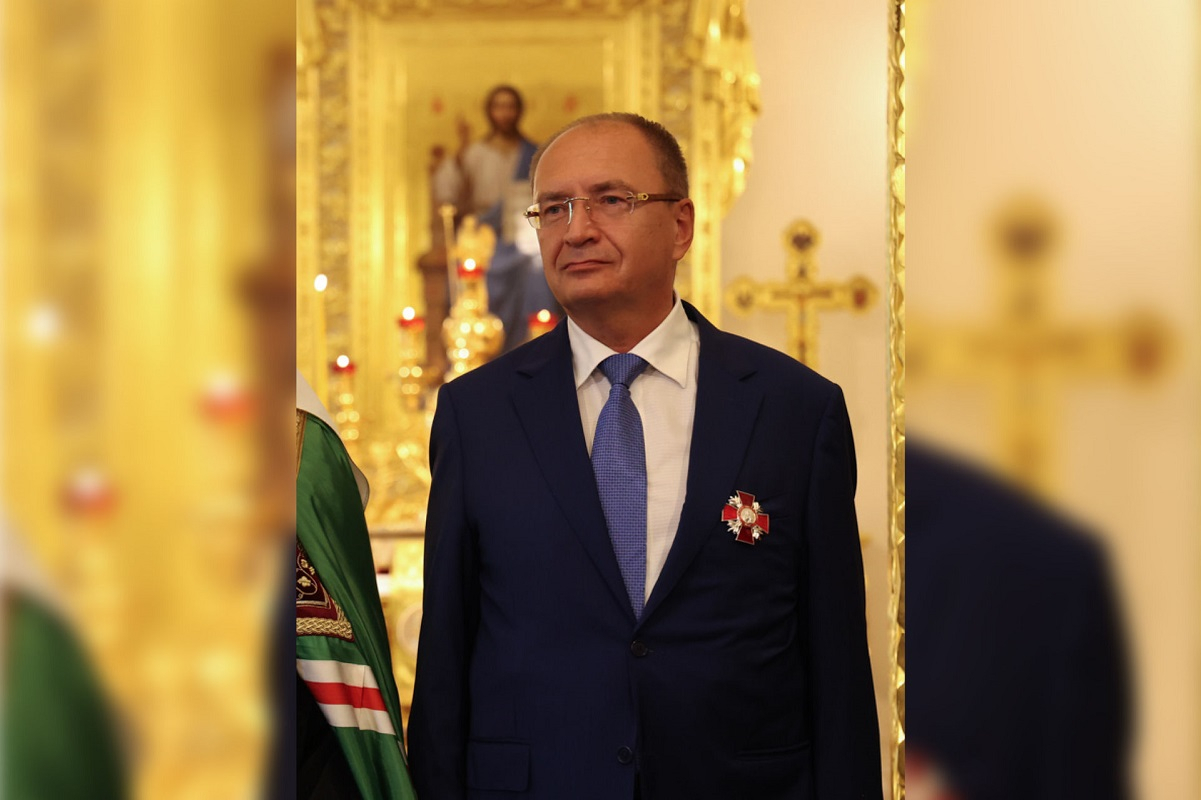"Peterburgskii Dnevnik" newspaper: Nikolay Kropachev: "Churches at universities are becoming centres of spiritual life"
The consecration of the house church has been held in the Twelve Collegia building. Nikolay Kropachev, Rector of St Petersburg University, spoke about how the church had been restored and how many students attended its parish.

In the anniversary year for St Petersburg University, the Church of the Holy Apostles Peter and Paul at the Twelve Collegia building was restored and reopened to parishioners. Why do you think it is so essential now?
The University is deeply connected to its past. Theological knowledge has always been an integral part of classical education. Even the decree of Peter the Great on the establishment of the Academy of Sciences and the University, which the history of all university education in Russia traces back to, mentions the tradition of teaching theology as one of the highest sciences. In the 18th and 19th centuries, students at St Petersburg Academic University and the Academic Gymnasium studied the fundamentals of theological knowledge, which nurtured moral principles and formed the worldview of young people.
298 years after Peter’s the Greate decree, the Institute of Theology was opened at the University, which united Orthodox theology, church history, biblical studies, Jewish studies and theology of Islam. Today — more than ever — the ideological component of educational courses is essential, which raises consciousness of young people and return value systems to both young people and education.
Understanding the importance of these processes, the University took the initiative to begin restoration of the Church of the Holy Apostles Peter and Paul, which is located in the historical centre of St Petersburg, i.e. in the building of the Twelve Collegia.
Why is the temple named in honour of Peter and Paul?
Initially, the Construction Committee, headed by Rector of St Petersburg Imperial University Ivan Shulgin, proposed to consecrate the church in honour of the holy apostle Peter, but Emperor Nicholas I of Russia ordered that it be named in honour of the heavenly patrons of the city on the Neva River, i.e. the supreme apostles Peter and Paul.

The restoration works were large-scale, weren’t they? Has it been restored to its earliest form?
Art and architecture restoration was carried out in the year of the celebration of the 300th anniversary of St Petersburg University, with the support of Gazprom and the Chairman of the Board, Alexey Miller. We restored the interior of the church and its original paintings and we made a new iconostasis and temple icon cases with icons.
We ordered a throne with a reliquary for relics, an altar cross with a crucifix, a tabernacle, a deacon’s candle, an altar seven-branched candlestick and other church supplies. We received support from Andrey Molchanov, Member of the Board of Trustees of St Petersburg University, a graduate of the University, and the founder of LSR Group.
Professional restorers, woodworkers and icon painters heavily relied on the preserved interior elements, historical information and documents. They were committed to preserving the high style and quality of the interior decoration of the church created in the 1830s according to the design of the diocesan architect Apollon Shchedrin.
On 10 September 2024, His Holiness Patriarch Kirill of Moscow and All Rus visited the University and performed a minor consecration of the church that had been opened after restoration. The Patriarch also donated an image of Christ the Savior to the University church and consecrated a historic street cross that would be installed above the main entrance to the Twelve Collegia building.
Dmitry Medvedev, Deputy Chairman of the Security Council of the Russian Federation, Chairman of the Board of Trustees of St Petersburg University, a graduate of the University, was present at the solemn ceremony of consecration of the church and donated an icon of the righteous John of Kronstadt, which would complement the church’s decoration.
How big is the church congregation today? Who is included in it? Are there many students, young educators?
The Rector of the Church of the Holy Apostles Peter and Paul is the Rector of the Smolny Cathedral, the Dean of churches in the universities of the St Petersburg diocese, Archpriest Pyotr Mukhin. Today, the parish of the church consists of the Rector, professors, educators, students, and employees of St Petersburg University. Church life at the University is gradually being revived. In the year of the 300th anniversary of St Petersburg University, we did tremendous work to restore the interior of the church, and in the near future, I am sure, the parish will increase significantly. About 100 people prayed at the service on the feast of the Epiphany in the University church, and even the next day, University staff and students came for holy water. I am sure that churches created on the territory of higher educational institutions are becoming not only centres of spiritual life, but also places where students can find moral support.
Can any St Petersburg resident get into the University temple today?
We are planning that after the rite of the Great Consecration of the Church of the Holy Apostles Peter and Paul, which was conducted by Metropolitan Barsanuphius of St Petersburg and Ladoga, the services will become regular and the church will be open to visitors every day. We are also planning to offer educational events.

